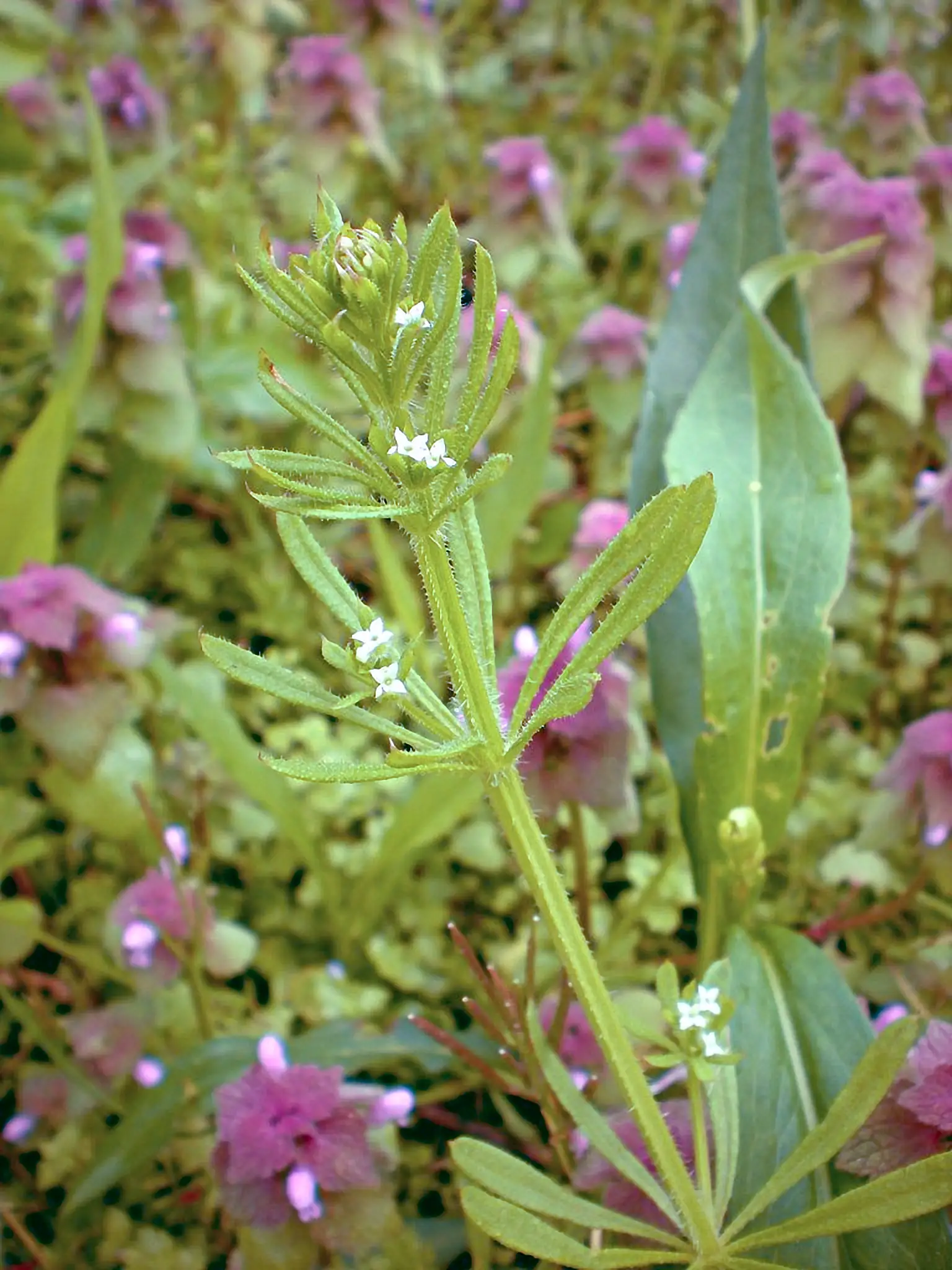 Photographed May 16.
Photographed May 16. Photographed May 16.
Photographed May 16.This bedstraw can be very abundant in some places. Above, growing through a fence by a city sidewalk; below, in an overgrown cemetery, with plenty of Purple Archangel (Lamium purpureum) for a backdrop. The stems (as you can see in the picture) are covered with prickly hairs that point toward the root, so it’s rough going if you’re a caterpillar or something trying to climb up. They also catch easily on clothes—thus the name “Cleavers.” The leaves come in whorls of eight, or sometimes six or seven; the stems are square; and the tiny white flowers have four pointed petals.
 Photographed May 4.
Photographed May 4.Gray describes the genus and the species:
GALIUM L. BEDSTRAW. CLEAVERS. Calyx-teeth obsolete. Corolla wheel-shaped, valvate in the bud. Stamens 4, rarely 3, short. Styles 2. Fruit dry or fleshy, globular, twin, separating when ripe into the 2 seed-like indehiscent 1-seeded carpels. — Slender herbs, with small cymose flowers (produced in summer), square stems, and whorled leaves, the roots often containing a red coloring matter. (Name from gala, milk, which some species are used to curdle.)
G. Aparine L. (CLEAVERS, GOOSE GRASS.) Stem weak and reclining, bristle-prickly backward, hairy at the joints; leaves about 8 in a whorl, lanceolate, tapering to the base, short-pointed, rough on the margins and midrib, 2.5-7 cm. long; peduncles 1-3-flowered; flowers white; fruit bristly, 3-4 mm. in diameter. — Seashores, Que. to Fla., and in rich or shaded ground inland; perhaps sometimes introd. (Eurasia.)